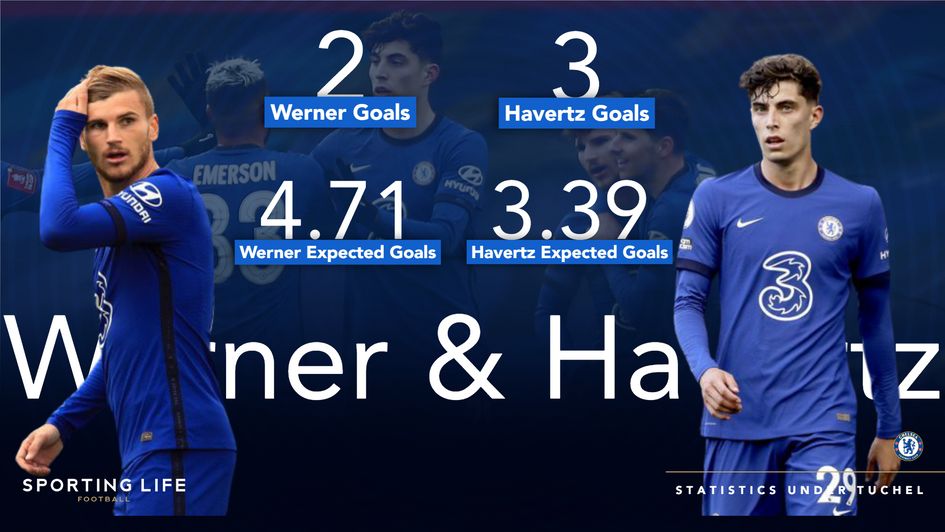Look at the Premier League table on Saturday night and there may be a “C” next to Manchester City’s name. Champions. Again.
Look at it in 12 months’ time and perhaps it will be Chelsea gearing up for a coronation.
The turnaround overseen by Thomas Tuchel since he replaced Frank Lampard as manager shows they will pose a serious threat. They already do.
City's FA Cup vanquishers, ending dreams of a quadruple in the process, and now their Champions League final opponents, standing in the way of the club's first European crown.

Certainly there is another, and distinctly, unofficial chart that suggests they could be City’s main rivals next season. It is the Tuchel table.
Under Tuchel, Chelsea are second only to City. They were 10th before his first game, a 0-0 draw with Wolves, kicked off. That brought the first of 32 points; 10 fewer than City but five more than Manchester United, seven better than Leicester and 12 ahead of Liverpool.
The Tuchel table shows both Chelsea’s strengths and weaknesses. Chelsea have the joint fewest defeats in his reign, just one, and everything about that 5-2 loss to West Bromwich Albion suggests it was an aberration.
And yet the 10-point difference with City, who have played a game more in that time, is explained by Pep Guardiola’s greater ability to win. City have two defeats but no draws in 16: Chelsea have been held five times and four of them were 0-0.
Recent champions have all but eliminated the draw, the eventual winners averaging just three per season between 2017 and 2020. To win the league, Tuchel’s Chelsea will first have to win more games.
Chelsea's defensive improvement
What Tuchel has done, is make Chelsea the Premier League’s outstanding defensive team in his time; conceding eight, and only three when they have had 11 men, and just two to opponents when they had a full complement of players. They have permitted the fewest good chances; their expected goals against is just 8.38, while City, with an xGA of 11.9, are second in that chart.

Chelsea have only allowed 35 shots on target in 15 games; in six of those matches their opponents have had under two efforts on target and in seven their xG has been 0.40 or under.
These clean sheets are no coincidence, and it is all the more remarkable as Tuchel inherited the team with the 11th best defensive record. There had been 24 shots on target against Frank Lampard’s team in his final five league games at the helm. Lampard only got five away league clean sheets in his reign, whereas Tuchel could get his fifth on Saturday.
What is expected goals (xG)?
- Expected goals (xG) is a metric that measures the quality of any given scoring opportunity
- Expected goals for (xGF) is the xG created by a team
- Expected goals against (xGA) is xG conceded by a team
City can argue their best spell defensively immediately predated Tuchel’s appointment: a two-month period in which they conceded twice in 10 matches, allowing 5.2 xGA in that spell.
Yet the big difference since the German’s arrival, and the area that offers most scope for improvement, is in attack. There is a dramatic difference: City have 40 goals to Chelsea’s 20. Guardiola’s men are top scorers by 12, Tuchel’s team tied for seventh in the scoring stakes.
That return of 20 goals in 15 games would translate to just 51 in a whole season; no team has won the Premier League with under 67, and the last four have got 85, 106, 95 and 85 respectively. Indeed, 51 goals would be Chelsea’s fewest since they got a mere 46 under Glenn Hoddle in 1995-96, when they came 11th.
Chelsea have been more creative than their meagre tally suggests. Their xGF in the Tuchel era is 26.41, second only to City: while Guardiola’s men have 20 more goals, they only have 6.39 more xG. It highlights the difference between good finishers and poor ones.
Chelsea underperforming in attack
It is unsurprising who the culprit in chief is. Timo Werner has scored two league goals under Tuchel, but his xG is 4.71. Despite Saturday’s brace against Fulham, Kai Havertz, with three goals from an xG of 3.39, is another underachiever and his chance against Brighton, which had an xG of 0.50, was a factor in a stalemate.

Mason Mount is both the top scorer, with four, and one who has overperformed. He is also, with an xA (Expected Assists) of 3.55 in Tuchel’s reign, the most creative player in that time.
If both Werner and Havertz’s records in the Bundesliga, where both overperformed his xG last season, suggest each has the potential to be more prolific, City nonetheless represent role models.
Tuchel’s forward line often consists of versatile attackers, some of whom can play in midfield. With Sergio Aguero often benched, so does Guardiola’s.

Chelsea need to sacrifice a defensive midfielder
Those 40 City goals during the time Tuchel has been in charge at Stamford Bridge have come from 14 players, with 11 getting assists. They have had players such as Ilkay Gundogan, Riyad Mahrez and Phil Foden who are not strikers but who have overperformed their xG.
One tactical difference lies in the midfield, where Tuchel tends to keep two holding players behind the ball, which shields the defence but comes at a cost to their attacking efforts: take out Jorginho’s penalties and he, N’Golo Kante, Mateo Kovacic and Billy Gilmour have a combined xG of just 1.21 under Tuchel. In a different shape, City have more of a threat from midfield.
And yet the gap between them may be narrower than the goals tallies suggest. City’s expected points in the Tuchel era is 34.7. Chelsea’s is 31.9, and they have a game in hand.
They have already beaten City this season, in the FA Cup, and Tuchel’s scalps also include Liverpool, Tottenham, Atletico Madrid and Porto. And one way to win a title is to defeat your rivals. Perhaps next season’s six-pointers with City will offer Chelsea a path to glory.
ALSO READ:







